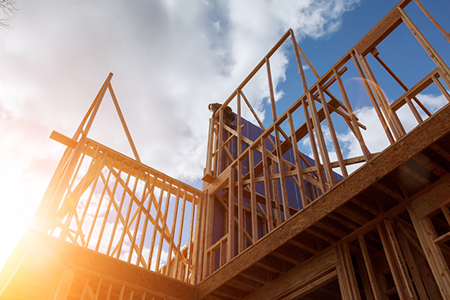April home-building was in the red, with housing starts tumbling 3.7 percent to 1.34 million—but, single-family starts were up, 0.1 percent to 894,000, according to the Commerce Department. Multifamily starts (five units or more) came in at 374,000.
Additionally, approvals for builds fell, 1.8 percent from March to 1.35 million permits; however, approvals for single-family starts were up, 0.9 percent to 859,000 permits. Approvals for multifamily starts came in at 450,000.
Completions, meanwhile, rebounded, up 2.8 percent to 1.26 million—but completions for single-family units totaled 820,000, slipping 4 percent. Completions for multifamily units totaled 425,000.
Although disappointing month-over-month, National Association of Home Builders (NAHB) Chairman Randy Noel lent perspective, stating “We expected some pullback this month after such a strong March report, but housing starts remain at very healthy levels in April. With homeownership rates on the rise, demand for single-family homes should continue to spur production in the months ahead.”
NAHB Chief Economist Robert Dietz echoed the sentiment, while emphasizing that expenses are increasing.
“Single-family starts are up 8.3 percent for the first four months of the year relative to the start of 2017, which is higher than our forecast and bodes well for the rest of the year,” Dietz said. “However, builders must manage supply-side hurdles, such as ongoing building material price increases and shortages of land and labor, to meet growing housing demand. Lumber prices continue to rise, with recent increases adding more than $7,000 to the price of an average single-family home.”
The crunch is especially harmful to millennials, who have limited options, said Bill Banfield, executive vice president of Capital Markets at Quicken Loans, in a statement.
“April’s drop in both new construction and permits for upcoming construction is a frustrating waypoint given we are falling well short of meeting the demands for new housing,” Banfield said. “New homes are an important addition in neighborhoods across the country, since many homeowners don’t want to list their home for sale out of fear of not finding a new home that fits their needs. This leaves eager first-time buyers behind, competing for limited supply of homes.”
Demand is not going to dissipate, either, said Ruben Gonzalez, chief economist at Keller Williams, in a statement.
“While rising mortgage rates and building material prices are likely to present some headwinds for new construction this year, we still expect the general trend of growth in the direction of more historically normal home levels of construction to persist,” Gonzalez said. “Fundamentally, demand for new homes should remain strong, with the economy operating near full employment and inventory of existing homes constrained in major markets across the country; however, we believe the vast majority of construction continues to focus on market segments with higher price points, meaning construction is unlikely to provide any direct relief to the much more constrained entry level market segments.”
According to the National Association of REALTORS® (NAR), in the first three months of 2018, there were 7.2 percent fewer homes listed on the market relative to a year ago.
For the latest real estate news and trends, bookmark RISMedia.com.












